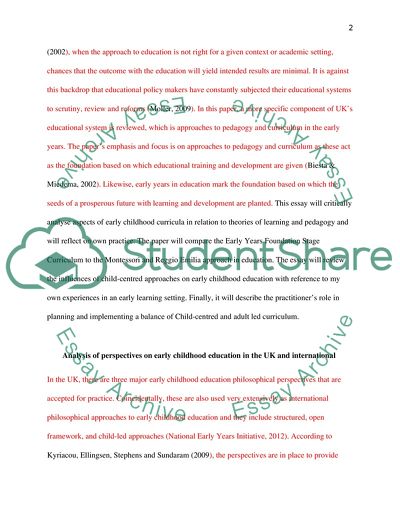Cite this document
(Approaches to Pedagogy and Curriculum in the Early Years in the UK Case Study Example | Topics and Well Written Essays - 3500 words - 1, n.d.)
Approaches to Pedagogy and Curriculum in the Early Years in the UK Case Study Example | Topics and Well Written Essays - 3500 words - 1. https://studentshare.org/education/1877425-approaches-to-pedagogy-and-curriculum-in-the-early-years
Approaches to Pedagogy and Curriculum in the Early Years in the UK Case Study Example | Topics and Well Written Essays - 3500 words - 1. https://studentshare.org/education/1877425-approaches-to-pedagogy-and-curriculum-in-the-early-years
(Approaches to Pedagogy and Curriculum in the Early Years in the UK Case Study Example | Topics and Well Written Essays - 3500 Words - 1)
Approaches to Pedagogy and Curriculum in the Early Years in the UK Case Study Example | Topics and Well Written Essays - 3500 Words - 1. https://studentshare.org/education/1877425-approaches-to-pedagogy-and-curriculum-in-the-early-years.
Approaches to Pedagogy and Curriculum in the Early Years in the UK Case Study Example | Topics and Well Written Essays - 3500 Words - 1. https://studentshare.org/education/1877425-approaches-to-pedagogy-and-curriculum-in-the-early-years.
“Approaches to Pedagogy and Curriculum in the Early Years in the UK Case Study Example | Topics and Well Written Essays - 3500 Words - 1”. https://studentshare.org/education/1877425-approaches-to-pedagogy-and-curriculum-in-the-early-years.


